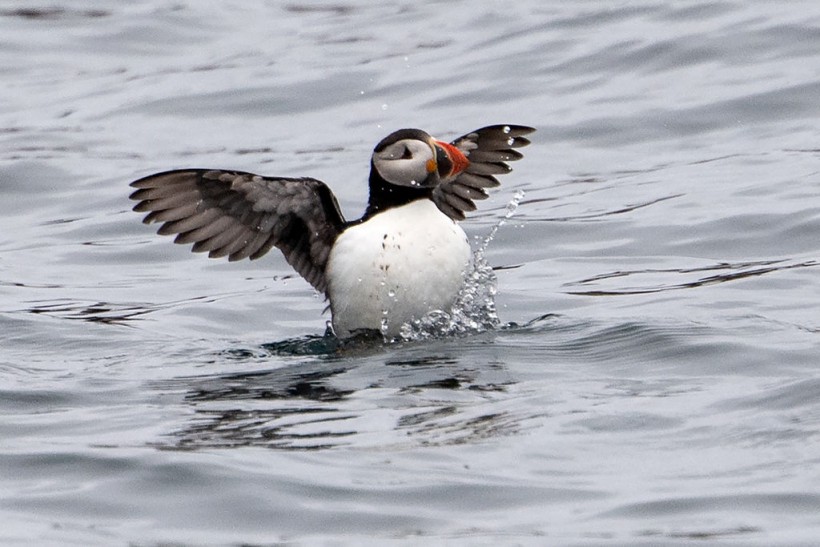The latest report found that over half of the breeding seabird population has declined over the past 20 years due to increasing temperatures, habitat loss and climate change.
Seabirds are sensitive to changing temperatures. Climate change can intensify increasing temperatures that affect seabirds. When temperatures increase, seabirds can look for new areas or likely starve.
According to reports, seabirds are important for the environment, especially for the marine and terrestrial areas. They can also help with plant growth and contribute to ecological and wildlife health. Research also found that seabirds can bring essential nutrients for marine animals and other species.
Half of Breeding Seabirds in Ireland, UK Declined

An atlantic puffin. Increasing warming and climate change harm the breeding seabirds in Ireland and the UK. Recent reports showed that they declined in the past 20 years. Understanding the threats is crucial for seabirds. It will offer new insights into conservation and protection amidst the problem of climate change.
However, seabirds and their habitats have encountered various threats, including the following:
- Habitat loss
- Climate change
- Human disturbance
- Oil spills
- Vessel strike
- Commercial gear entanglement
- Pollution
- Increasing temperatures
Understanding the threats is crucial for seabirds. It will offer new insights into conservation and protection amidst the problem of climate change. In the new report, researchers explained that over half of seabirds in the Ireland and UK have declined in the past 20 years.
In Scotland, about 14 species of seabirds lost in number or declined. The outbreak of bird flu could heavily impact the population of seabirds.
The alarming report raised concerns for urgent mitigation plans to save breeding seabirds from further decline. In the survey, they covered parts of the Channel Islands off the coast of northern France.
Furthermore, 11 out of 21 seabirds in the region showed a concerning decline in numbers. Climate change and invasive species contributed to the loss in number of seabirds.
According to the Seabirds Count survey, the weather conditions have affected the nesting areas. It made it more challenging for the animals' foraging conditions.
Meanwhile, the rising temperatures have also harmed the food sources for seabirds. Seabirds can struggle to look for food due to hotter weather conditions.
As a result, conservation efforts and monitoring are crucial to save seabirds from decline.
Threats of Plastic Pollution on Seabirds
Plastic pollution has been an alarming threat to wildlife, including seabirds and marine animals. Plastic debris can look like food for seabirds that they can likely consume.
When seabirds eat plastic debris, they can die or starve to death. The recovery will become challenging. With the increasing plastic pollution, it can be devastating for marine animals and seabirds.
Also Read: Light Pollution Threatened Bats' Nocturnal Wildlife, Habitats, Reports Show
Did You Know? Seabird Facts
Seabirds are fast-moving birds that can travel up to a total distance of over 22,000 miles.
Related Article: Widespread Microplastics Harm Aquatic Species in Rivers in Mediterranean Sea and Atlantic Ocean, Report Warns
For more similar stories, don't forget to follow Nature World News.
© 2024 NatureWorldNews.com All rights reserved. Do not reproduce without permission.

![Climate Change is Reducing Dust Levels Worldwide as Arctic Temperature Warms [Study]](https://1471793142.rsc.cdn77.org/data/thumbs/full/70320/280/157/50/40/climate-change-is-reducing-dust-levels-worldwide-as-arctic-temperature-warms-study.jpg)

![Tsunami Hazard Zones: New US Map Shows Places at Risk of Flooding and Tsunamis Amid Rising Sea Levels [NOAA]](https://1471793142.rsc.cdn77.org/data/thumbs/full/70325/280/157/50/40/tsunami-hazard-zones-new-us-map-shows-places-at-risk-of-flooding-and-tsunamis-amid-rising-sea-levels-noaa.jpg)

